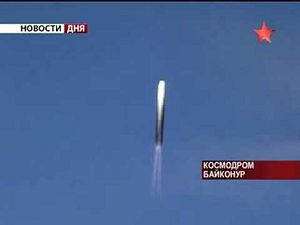Russia’s Strategic Missile Force will receive the first two intercontinental-range ballistic missiles (ICBMs) armed with a new hypersonic glide vehicle (HGV) — the Avangard (Vanguard in English) hypersonic boost-glide warhead —in late November or early October, according to Russian media reports.
“In late November – early December, two UR-100N UTTKh missiles equipped with the hypersonic glide vehicles from the first regiment of Avangard systems will assume experimental combat duty in the Dombarovsky division of the Strategic Missile Force,” a Russian defense industry source was quoted as saying by TASS news agency on November 13.
Work is currently underway “to prepare both missiles and place them into the silos, check the operation of the regiment’s protected command post and carry out other measures,” the source added.
Each UR-100NUTTkH (NATO reporting name: SS-19 Stiletto) ICBM will be armed with one Avangard hypersonic boost-glide warhead. The Avangard HGV can reportedly be integrated with the missile as a multiple independently targetable re-entry vehicle (MIRV). Russia’s Strategic Missile Force possesses around 30 SS-19s, with 10 to 20, depending on sources, operationally deployed.
(Notably, despite earlier speculations the Avangard HGV will not be mounted on Russia’s newest and most powerful ICBM, the RS-28 Sarmat.)
The 13th regiment will reportedly be the first unit to receive the two retrofitted SS-19 ICBMs. The regiment is part of the Dombarovskiy (Red Banner) missile division based in the Orenburg region in the south Urals. The regiment is expected to eventually receive four more SS-19 ICBMs fitted with Avangard warheads.
A second regiment also composed of six SS-19s fitted with the Avangard HGV will be stood up by 2027, according to Russian media reports.
Interestingly, the deployment of the new ICBMS is taking place without additional flight tests of the Avangard warhead. As I reported previously:
In December 2018, Russia test launched an [ICBM] carrying the Avangard hypersonic glide vehicle (…). The test was deemed a success. A previous test launch of the Avangard HGV, carried out in October 2017, ended in failure.
There is no indication that other tests have taken place besides the 2017 and 2018 launches. Notably, Russian President Vladimir Putin announced in March 2018 that the Avangard HGV, developed under the secret Project 4202 and codenamed Yu-71, has entered serial production.
According to U.S. intelligence estimates, the Avangard hypersonic warhead is not expected to achieve initial operational capability until 2020.
U.S. government officials stated earlier this year that the Russian defense industry will be struggling to manufacture Avangard warheads in large quantities due to a lack of critical carbon fiber components needed for their production.
“It’s expected that they will make no more than 60 of these hypersonic weapons because it’s just proving to be too expensive to develop,” a U.S. government source was quoted by CNBC as saying in a July 1 report.

































